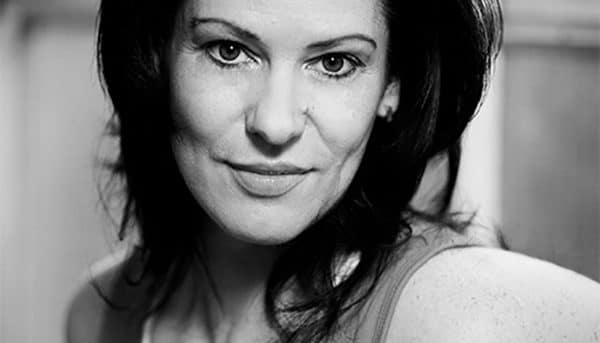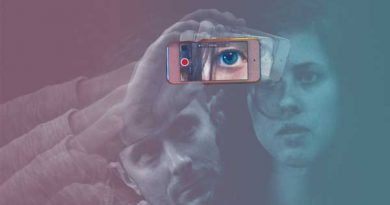Coffee With Dana Jolly, Part One: The Power of Positivity, Dealing with Injury, and Overcoming Limitations
Dana Jolly is a renowned Australian performer, choreographer and in-demand freelance teacher with a professional career that spans over forty years, both in Australia and internationally.

Dana’s performing credits in the UK include Andrew Lloyd-Webber’s Song And Dance, Shall We Dance tour, and over the years working with artists such as Ray Charles, Madonna and Gloria Estefan to name a few.
Dana returned to Australia as Resident Choreographer on Showboat and We Will Rock You as well as many other Australian works. In 2012 Dana choreographed the Australian Musical premiere of Chitty Chitty Bang Bang. She was then invited to choreograph the Sydney premiere of the musical Dirty Rotten Scoundrels at Sydney’s Theatre Royal in 2013. To top it all off, Dana runs her own entertainment company, ‘Voltage International Productions’.
I first met Dana Jolly after some friends of mine brought me along to one of her 9:30am open jazz classes. When I arrived, it was a full class, and as everyone was stretching Dana made her way around the room, introducing herself to every new face, asking their name and what experience they had. The personal greeting instantly made me feel welcome, as I was only a week or so into moving to Melbourne and still finding my feet. Throughout the class it was easy to understand why so many people were packed into the room. The nurturing environment Dana created left me feeling empowered, despite the fact that it was quite a challenging class. Afterwards, I knew I had to pencil it in as one of my weekly classes.
It was not only Dana’s teaching style that resonated with me, but also how open she was about managing the body’s limitations and injuries. An injury in the industry can often feel like a taboo subject, something that has to be pushed through to avoid looking ‘weak’. In reality, I’ve met barely anyone in the industry who hasn’t dealt with a sprain, strain, or an overuse injury in his or her career. Dana’s resilient and proactive attitude has become a personal source of motivation that I wanted to learn more about, as it is crucial to work kindly with the body you’re given.
I was lucky enough to sit down and have a chat to Dana about her own journey. In Part One of this interview, Dana shares insight into her early career and overcoming limitations as a performer.
Tell me about your early dancing career.
I was born very pronated and knock-kneed, and the doctors thought it would be a good idea for me to do some dancing. It was just at the local dancing school, and I did the odd little competition just to gain some performance experience. I auditioned for VCA when I was eleven, the very first year it was about to open, got into VCA, and that was it for me until year twelve. I then completed a Bachelor of Arts Diploma in Dance.
So what drove you to pursue your career in performing?
That’s a good question. I don’t know what was the trigger. I think I was about eight or nine. I’d done Gypsy, which ran for about seven months in Melbourne, and I told my parents not to bother sending me to private school cause I was going to be a performer. I just told them that that’s what I’m going to do. I was born that way. My parents were very supportive of it.
Since it was medical issue that began your dancing career, were there ever issues of body limitations?
It was kind of one of those [situations] where I knew I was coming from a physically challenged place, and back then there was only one set way of teaching for everyone. Things would be quite hard for me. I’d get yelled at for stretching my leg, and I really was stretching it, but my knee just wouldn’t stretch. I would force a lot of things, as I was so determined. I just worked and worked, and I achieved the results I intended to get, but it wasn’t necessarily through a conducive way for my body type. As the years went on I always had pain in my lower back or my hip, which later in life I found I was born with a deformed hip, which added to the pronation. It was always an uphill battle for me, with no one really letting me to work with it, but just expecting the results.
As I got older I gained the awareness that if my body just didn’t like to do that, then other peoples bodies wouldn’t like to do that either. I was seeing a lot of Physiotherapists and Osteopaths, and I think that fuelled the passion throughout my career to understand how the body works.
In your early years, did your injury affect you mentally?
Oh yes, it affected me definitely because when you’re young, you’re insecure, and you think ‘why can’t I do that’ and ‘why is that not possible’ rather than embracing what you can do. I only learnt that through maturity. I just wish there had been someone who would have been guiding me to find that at a much earlier date so I wouldn’t have to go through all the years of the struggle emotionally and physically.
And there was the psychological damage of teachers telling me – I remember one particular teacher telling me ‘You look like a balletic spastic and I should give up and save myself and the rest of the world a whole lot of pain and misery’ – quote. That was her phrase. I was 13 years old. That impacted on me heavily and took me a long time – not until I was in my mid to late twenties – to get that out of my head. I was starting to work consistently in London, and that helped me go ‘Well if I was that bad, then why am I getting all this work?’ And that was the beginning of being able to embrace myself.
Some people would think you just weren’t trying to do something, when you just physically weren’t capable of doing it. So now I never expect that from my students because I know directly, first hand what it’s like to be thinking, ‘I’m trying to do that but my body just doesn’t go there’ and it doesn’t go there because it isn’t natural or organic for it to do it.
You are open and honest in your classes about your personal injury management, specifically in your hip. Could you speak further about that injury?
I was born with Femoral Acetabula dysplasia, which I didn’t know about until about seven years ago. My hip socket never formed properly, so my femur off the top of my left leg was always butting into the socket. I never tore any ligaments, because I had good technique, but it was a constant issue for performance. It got pretty bad about three years ago, so I got one operation, which didn’t work, so six months later I got a hip replacement. That was over two years ago. It’s pretty good! It only holds me back in a couple of areas, but apart from not being able to run marathons anymore or do the splits, that’s about it.
I always wanted students to know that there’s always a positive, because injuries will happen. It’s very easy to be injured and say ‘Oh I can’t dance, it’s the end of the world’, so I would still come in on crutches, and sit and teach the classes. There are always ways to work around something.
So you’ve dealt with pain your entire career?
Yep. I’ve had lower back and hip pain my whole life. Every week I was either with the osteopath or the masseuse. If I wanted to dance, that was the way it was going to be for me. I had a management plan to get treated every week, and when I was on tour, I’d finish a show, cool down, put on heat packs or icing and I’d have to do my massages. While everyone else would go out after the show and have a bit of fun I’d go back to the hotel room and do my management program.
Did you ever doubt yourself during that time?
Yes. But I just knew I had to do it, so I had to get past that doubt. I couldn’t imagine a life not performing, so I just had to find a way to manage it. I’d rather do that and spend two hours management a night to be able to look after it and get through to the next show, than to be able to go out and do others things but not have the dream. It wasn’t even a question really.
Stay tuned for Part Two, where Dana chats about delving into the choreography world, the importance of establishing a routine, and being on the other side of the casting table.




